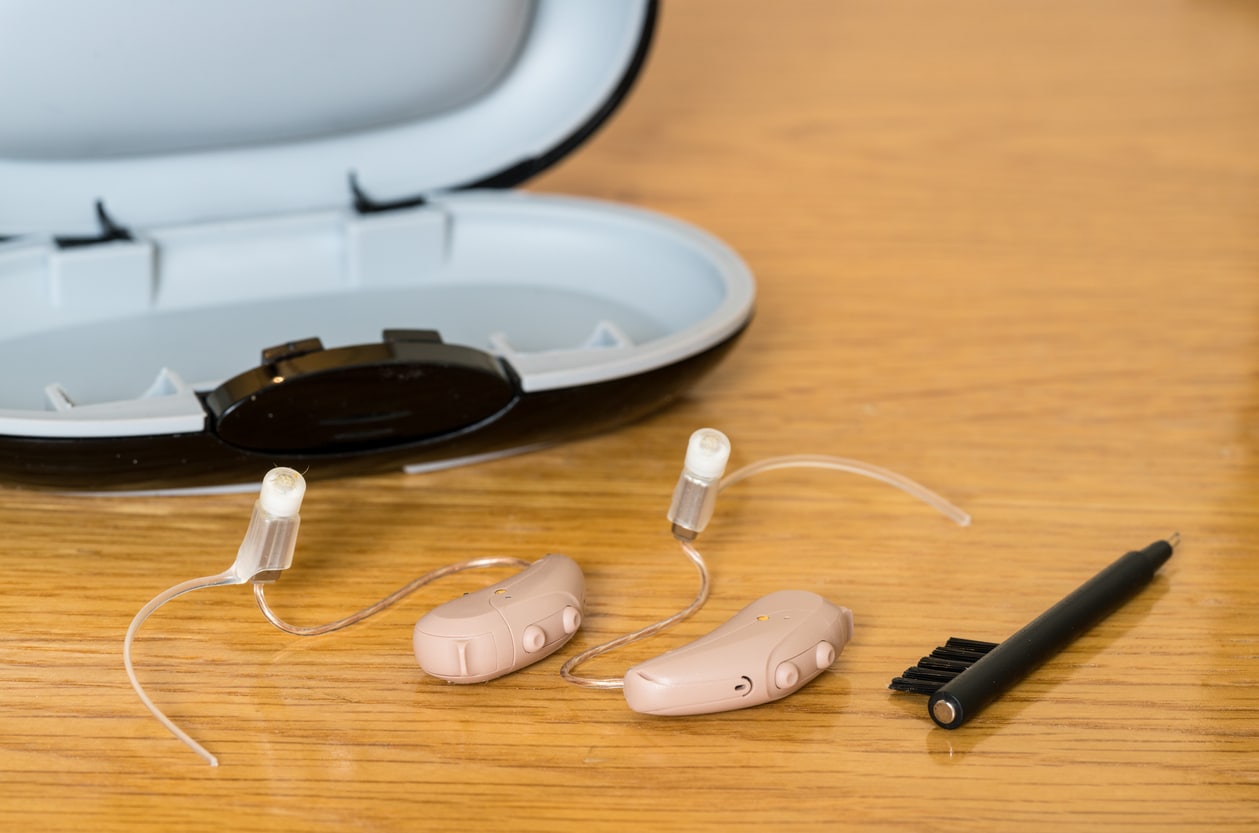You’re probably aware that you must keep your hearing aids away from water, but sometimes accidents happen. If you’ve gotten your hearing aids wet, don’t panic! There are methods to dry them; if you act quickly, you can prevent or lessen the water damage.

Using a Hearing Aid Dehumidifier
A hearing aid dehumidifier (sometimes called a drying kit) is best for attending to the moisture your hearing aids are exposed to daily, such as sweat, humidity and rain. Dehumidifiers are small boxes or jars that you place your hearing aids into, alongside a moisture-absorbing agent, such as silica gel beads, which absorbs moisture from the air around it. The agent lifts the water off and out of the hearing aids, absorbing it. This process takes a few hours to completely dry your hearing aids, so a dehumidifier works great overnight.
Using a Hearing Aid Dryer
Hearing aid dryers are faster and more active than hearing aid dehumidifiers. They work best if your hearing aids have been fully submerged in water and must be dried off quickly. Like dehumidifiers, they are shaped like a box and you place your hearing aids inside. Unlike dehumidifiers, you then turn the device on, and it gently warms your hearing aids with a fan, heater or UV light. That heat will evaporate the water in and on your hearing aids. Many hearing aid dryers that utilize a UV light can also kill bacteria.
Signs of Water Damage
Despite drying your hearing aids properly, water damage can still occur. Some signs to watch out for include:
- Muffled or distorted sound
- Decreased sound quality
- Increased feedback
- Battery dying suddenly
- Battery corrosion
- Rust
Pay attention to your hearing aids’ performance after moisture exposure, and if you notice any changes, you should book a repair and service appointment to have them professionally examined. Call Gary D. Schwartzberg, Au.D., Doctor of Audiology to make an appointment.